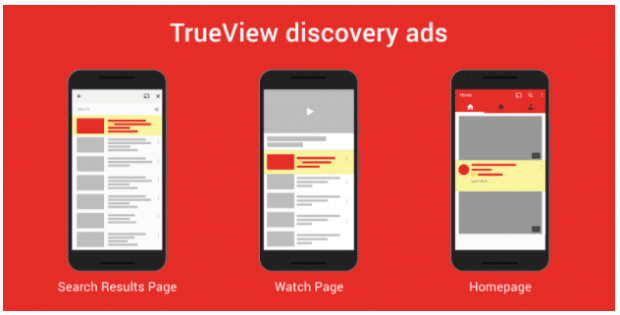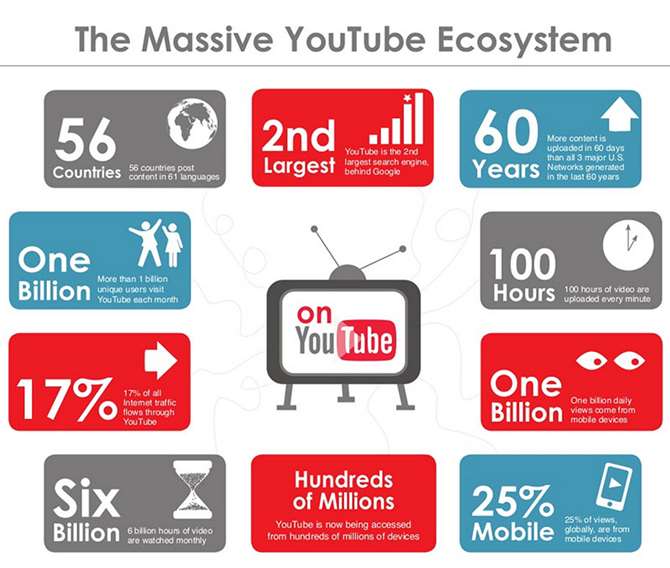Have you ever wondered why YouTube TV seems to have so many ads? If you're anything like me, the allure of ad-free streaming can quickly fade when your favorite show is interrupted by commercials. In this blog post, we’ll dive into the world of YouTube TV ads, uncovering what they are, why they exist, and how they are tailored to enhance your viewing experience. So, let’s get started!
The Role of Advertising in Streaming Services

Advertising plays a crucial role in the ecosystem of streaming services, particularly with platforms like YouTube TV. Here’s a breakdown of why ads are such a significant component:
1. Financing Content: One of the most straightforward reasons ads are prevalent is that they help finance the streaming service. Producing shows and covering licensing fees for live TV content can be expensive. Advertising revenue helps mitigate these costs, allowing services to provide a diverse range of programming.
2. Keeping Subscription Costs Down: Think about it: many streaming platforms offer ad-supported tiers that are more affordable than their ad-free counterparts. This allows users to choose a plan that fits their budget. By incorporating ads, services like YouTube TV can keep subscription prices competitive and accessible.
3. Targeting and Personalization: With advancements in data analytics and user tracking, ads on YouTube TV can be tailored to individual preferences. You might notice that the commercials you see are often targeted based on your viewing habits, interests, and demographics. This personalization can make ads feel more relevant and engaging, even if they interrupt your binge-watching marathon.
4. Viewer Engagement and Analytics: Ads aren’t just a way to generate revenue; they are also a tool for brands to engage with viewers. Streaming platforms can collect valuable data on ad performance, audience interactions, and overall engagement. This data helps advertisers refine their strategies, ensuring that the ads you see are as effective as possible.
Here’s a brief overview of how ads fit into the streaming experience:
- Types of Ads: From short commercials to sponsor messages, the types of ads can vary widely.
- Ad Fatigue: While relevant ads can be helpful, too many interruptions can lead to frustration. Balancing ad frequency is key.
- Ad-Free Options: Many services do offer an ad-free experience for a higher subscription fee, catering to viewers who prefer uninterrupted viewing.
In conclusion, while the abundance of ads on YouTube TV can be a bit overwhelming at times, they serve important functions that sustain the platform. As users, we have to navigate this balance between cost, content quality, and our viewing preferences. So the next time an ad pops up, you might just appreciate the larger picture of why they’re there!
Also Read This: Discover ‘A Quilting Life’ on YouTube: Inspiring Videos for Craft Enthusiasts
3. YouTube TV's Advertising Policies Explained

YouTube TV has become a popular choice for cord-cutters looking for a robust streaming service that mirrors traditional cable. But, like most free platforms, it monetizes content through advertising. Let’s unpack YouTube TV’s advertising policies to understand how they work and what you can expect as a viewer.
First off, YouTube TV employs a mix of dynamic ad insertion and traditional commercial breaks. This means you might see ads tailored specifically to your viewing habits, making them feel more relevant compared to the generic commercials you may find on regular TV. In fact, the ads you encounter are often based on a variety of factors, such as:
- Your location
- Your viewing history
- Your demographic information
Now, it's essential to note that YouTube TV does try to maintain a balance. Their policy includes presenting ads in a way that minimizes disruption to the viewing experience. While you might feel overwhelmed by ads on some networks, others have fewer interruptions, and YouTube TV encourages a positive user experience.
Another important policy is transparency. YouTube TV aims to give viewers insight into why they see certain ads. If you’re curious about this, you can often find options to provide feedback or adjust your ad settings in your account preferences. This interactive aspect allows users to have some control over the advertisements they encounter.
However, not every ad will be skippable. YouTube TV, like many streaming services, uses a combination of short and long-form ads. While some ads can be skipped after a few seconds, others may require you to watch them entirely. This policy contributes to maintaining revenue for content providers and advertisers alike, which is crucial for sustaining the platform.
To sum it up, YouTube TV's advertising policies are designed with a user-friendly approach in mind. They aim to provide relevant ads while ensuring that viewer experience is respected through controlled ad placements. So, next time you're watching your favorite show, keep these policies in mind, and you might just see ads in a different light!
Also Read This: Sharing YouTube Videos on Instagram Stories Made Easy
4. Types of Ads You Encounter on YouTube TV

As you surf through YouTube TV, you’ll likely come across a variety of ad formats designed to engage viewers. Understanding the types of ads you might encounter can make the advertising experience more tolerable—and even beneficial. Here’s a breakdown of the most common ad types you’ll see:
- Pre-Roll Ads: These are the commercials that play before your chosen content starts. They typically last between 15 to 30 seconds and, depending on the network, may be either skippable or non-skippable.
- Mid-Roll Ads: Just like traditional television, YouTube TV inserts ads in the middle of your content. These can break up longer videos, resulting in a more dynamic viewing experience, but they can also be annoying if not placed thoughtfully.
- Post-Roll Ads: Positioned at the end of your content, these ads are often shorter but still aim to engage viewers as they complete their viewing experience.
- Bumper Ads: These are short, non-skippable ads that usually run for about 6 seconds. They serve as quick reminders and can be effective in reinforcing brand messaging.
- Sponsored Content: Occasionally, you might see sponsored segments during shows or events. This type of advertising integrates brands or products directly into the content, often blurring the lines between programming and advertising.
- Display Ads: As you navigate through YouTube TV’s interface, you might notice banner ads or overlays promoting different shows, movies, or products. These ads take up a portion of the screen and can often be clicked for more information.
Understanding the various ad types can help you navigate the YouTube TV experience while being mindful of the advertising that pays for the content you love. With a mixed model of ads, YouTube TV aims to keep its service affordable while providing a wide range of entertainment options. So, the next time you’re about to settle in for a binge-watching session, remember that those ads help keep the service running smoothly!
Also Read This: How to Delete Videos from Your YouTube Library on Mobile or Desktop
5. Comparison with Other Streaming Services

Let's take a moment to dive into how YouTube TV stacks up against other popular streaming services when it comes to advertising. If you’ve ventured into the realm of streaming, you’re likely familiar with the big names in the industry, such as Netflix, Hulu, Amazon Prime, and Disney+. So, how does YouTube TV's ad approach compare?
1. Ad-Free Options: One of the significant differentiators is that many streaming services offer ad-free subscriptions. For example:
- Netflix: Known for its completely ad-free streaming, Netflix relies on subscription fees alone to fund its original content.
- Amazon Prime Video: Like Netflix, Prime Video doesn't interrupt your viewing with ads, allowing for a seamless experience.
- Hulu: Offers both ad-supported and ad-free plans, letting users choose their experience based on preference and budget.
YouTube TV, on the other hand, is primarily ad-supported, especially with the live channels it features. While it does offer an option to add an “ad-free” feature for certain on-demand content, live broadcasts often still come with commercials.
2. Variety and Quantity of Ads: The volume of ads you encounter on YouTube TV can vary widely compared to other services:
- Live TV Availability: Since YouTube TV offers live broadcasts of many networks, it comes with traditional ad breaks similar to what you’d find on cable TV.
- Streaming Exclusives: Services like Hulu tend to have fewer ads on streaming-only content, while other options focus on integrating direct advertising into the live experience.
Moreover, the nature of ads also shifts. While many platforms promote content that aligns with viewer interests, YouTube TV, since it’s tied to the broader YouTube ecosystem, may display a range of ads based on your viewing history across the platform. This personalized ad approach can sometimes enhance relevance but may also lead to viewer fatigue if the same ads play too frequently.
3. Content Exclusivity: Finally, consider the nature of the content available. Platforms with exclusive content like Netflix or Disney+ often manage to keep users engaged enough to overlook the absence of live events. YouTube TV’s strength lies in its extensive library of live channels, making the ad experience just a part of the overall package. However, knowing this, users may expect ads as part of watching live TV.
Also Read This: How to Upload Videos on YouTube Fast
6. Impact of Ads on User Experience
Now that we’ve compared YouTube TV with other streaming giants, let’s delve deeper into how ads affect user experience on the platform. You might be wondering: Do ads ruin the magic of streaming? The answer is a bit nuanced.
Disruption vs. Engagement: Ads are often seen as disruptive elements in the viewing experience. Here are some points to consider:
- Interruptions: While watching your favorite show, it's not uncommon for ads to pop up and break the flow of the narrative. This can be jarring and lead to frustration among viewers who are invested in the content.
- Ad Fatigue: If you frequently encounter the same commercials, it can lead to ad fatigue, where viewers become annoyed rather than engaged by the advertisements. This may push some users to seek alternative platforms.
- Viewer Attention: Interestingly, well-produced ads can sometimes capture the audience’s attention, making them feel as if they’re part of the overall entertainment experience. Think of commercials that feature cinematic storytelling or celebrity endorsements.
The Potential for Personalization: One bright spot amid the ad clutter is the potential for *personalized advertising*. Here’s how it can impact user experience:
- Relevant Offers: If ads are tailored based on your viewing habits, they can actually enhance the overall experience by prompting interest in products or services that resonate with your lifestyle.
- Brand Engagement: Ads that align with viewer preferences can create a connection with brands, turning a disruptive break into an opportunity for engagement.
Ultimately, the impact of ads on YouTube TV user experience varies from person to person. For some, the ads may simply become part of the routine, while for others, they could signal a diminishing appeal in the service overall. As viewers, it's important to recognize the balance between content consumption and the inevitable presence of advertisements.
Also Read This: How Much Does the Deal Guy Make on YouTube? A Look Into YouTube Earnings
7. Managing Ads on YouTube TV: What You Can Do
If you’ve ever settled in for a cozy night of binge-watching on YouTube TV, you might have noticed the frequent interruptions from ads. Yes, ads are part of the streaming service experience, and while they can be a bit annoying, there are ways to manage and minimize their impact on your viewing experience. Let’s dive into some strategies to help you navigate the ad landscape on YouTube TV.
Your Viewing Choices Matter! One of the most effective ways to manage ads is by being selective about what you watch. Some channels and shows have more ads than others. Popular, premium content often comes with more commercial interruptions. If you can, try to choose less popular shows or even channels known for fewer ads to minimize interruptions. It might take some trial and error, but soon enough, you’ll discover your sweet spots.
Utilizing the Built-in Features: YouTube TV has some built-in features that can help you avoid ads. For example, you can use the Cloud DVR feature to record shows and then fast-forward through the ads later. This is a great way to catch up on your favorite programs without the interruptions. Just remember that some live broadcasts may have fewer recording options due to licensing agreements.
Ad Preferences: Another step you can take involves managing your ad preferences. While you might not eliminate ads entirely, customizing your ad settings can lead to seeing fewer interruptions that are relevant to you. When you engage with ads (like clicking on them) or don’t show interest in certain ad types, it can adjust the algorithm to tailor ads more to your liking.
Trial and Error with Subscription Options: Lastly, consider the subscription tiers you choose. YouTube TV generally doesn’t offer an ad-free version, but other streaming platforms often do. If ad-free viewing is a priority for you, you might want to explore alternatives or even consider if a combination of services could work better for your viewing habits.
In summary, while ads are a reality on YouTube TV, being strategic about your viewing choices and utilizing features like Cloud DVR can help mitigate their presence in your streaming journey. Remember, you’re the one in control of your viewing experience!
8. Conclusion: The Future of Advertising on YouTube TV
As we wrap our discussion on ads in YouTube TV, it’s essential to reflect on the future of advertising in the streaming realm. With the ever-evolving landscape of digital media, it’s intriguing to consider how platforms like YouTube TV will adapt and innovate in response to viewer habits and preferences.
The Shift Towards Personalization: One significant trend is the growing emphasis on personalized advertising. As data analytics become more sophisticated, YouTube TV is likely to leverage viewer behavior data to deliver tailored ads. Imagine a world where the commercials you see are perfectly aligned with your interests and viewing history—this is where we’re heading!
Enhanced Interactive Advertisements: We’ve already seen initial steps toward interactive ads on various platforms, and YouTube TV may soon follow suit. This could create an engaging experience, where viewers not only watch ads but also interact with them. This form of advertising could increase viewer engagement and make ads more relevant, lessening the annoyance typically associated with them.
Balancing Act: As YouTube TV continues to expand its library and attract more viewers, the challenge will be maintaining a balance between ad revenue and user experience. Striking this balance is crucial; too many ads can drive viewers away, while too few may limit the platform’s revenue potential. It’s a tightrope walk that the service will have to navigate carefully.
The Role of Policy and Regulations: Lastly, we must consider how industry regulations will shape advertising on platforms like YouTube TV. As privacy concerns grow and regulations evolve, advertisers will need to tread carefully to ensure compliance while effectively reaching their target audiences. This could lead to more transparent advertising practices, benefiting both viewers and advertisers.
In conclusion, the future of advertising on YouTube TV is multifunctional and dynamic. While ads are a staple of the platform now, the way they are delivered and experienced is bound to change. By maintaining an open dialogue between users and advertisers, YouTube TV can evolve a model where both the viewer and the advertiser find common ground for an immersive entertainment experience.
 admin
admin








